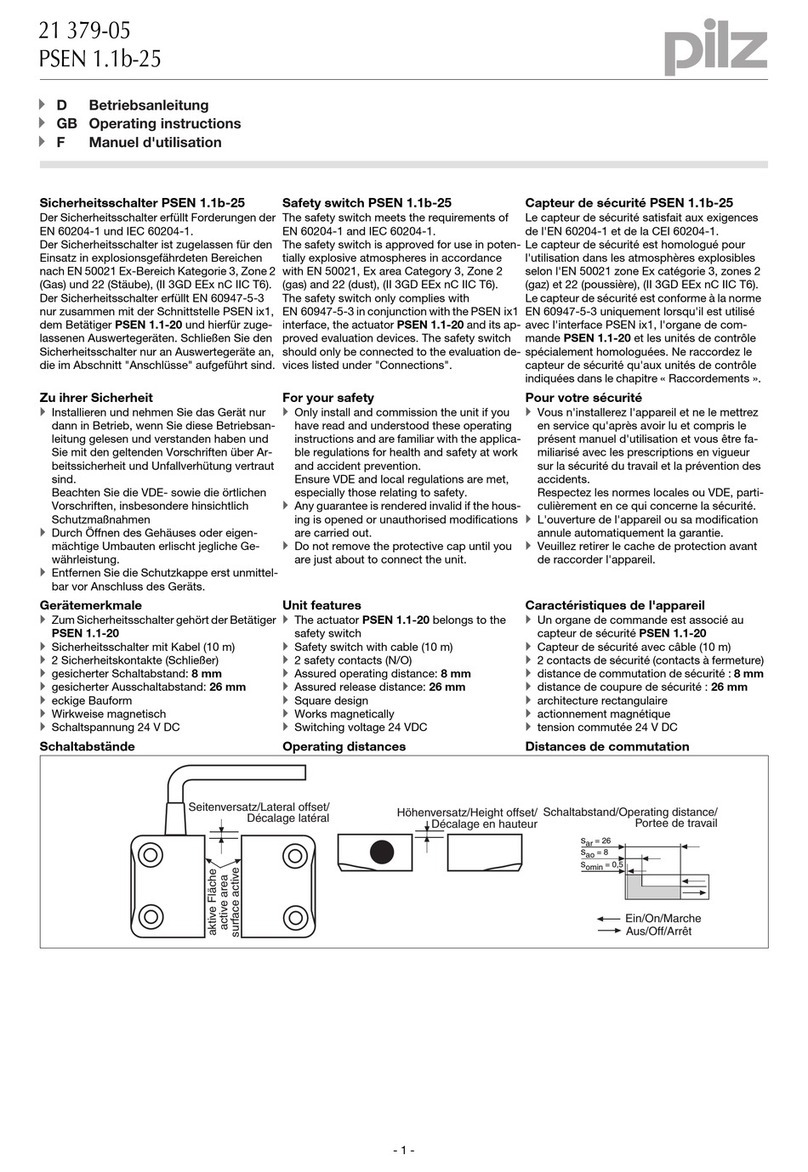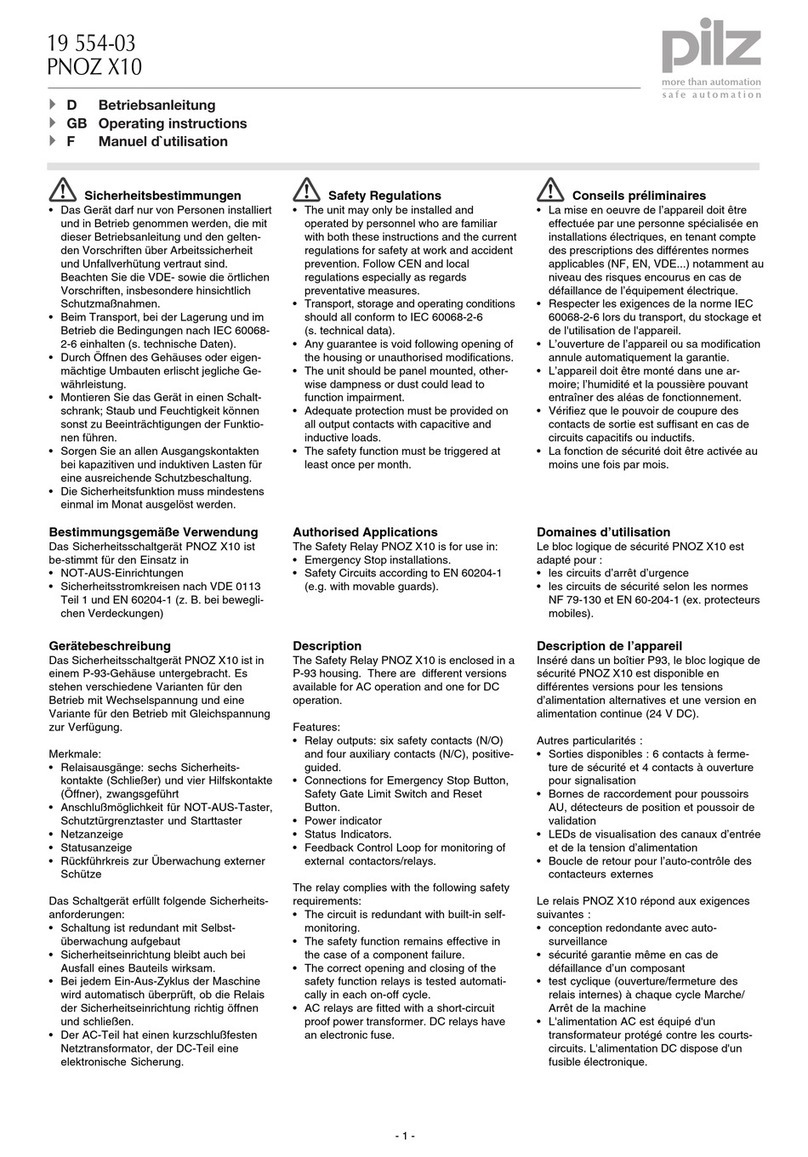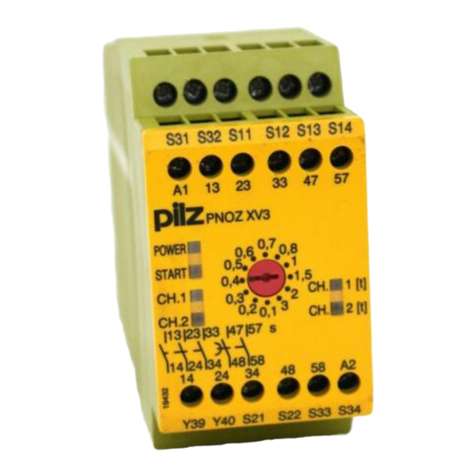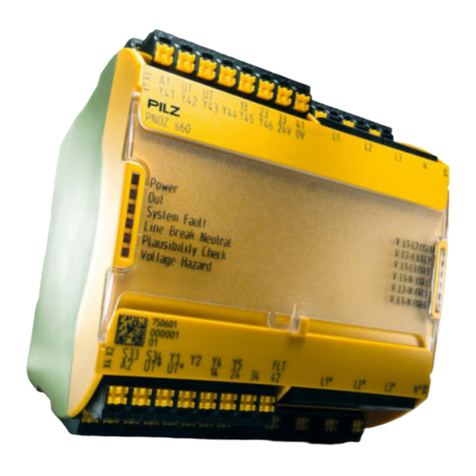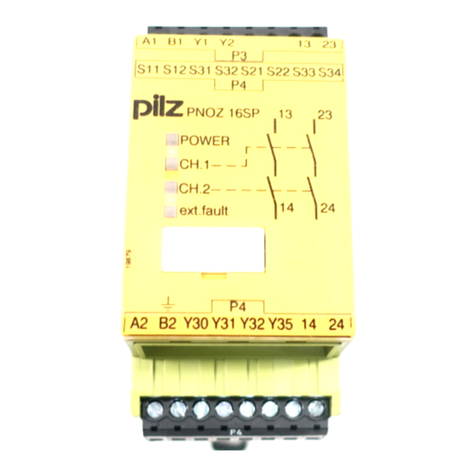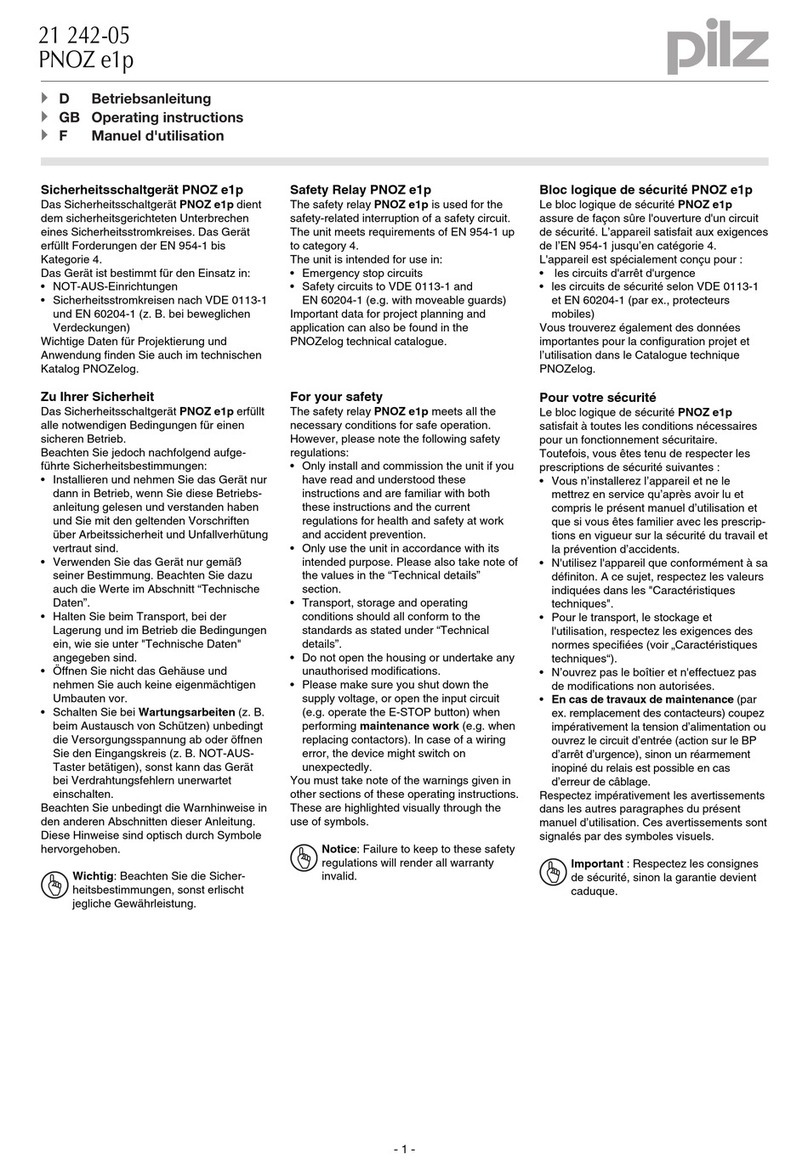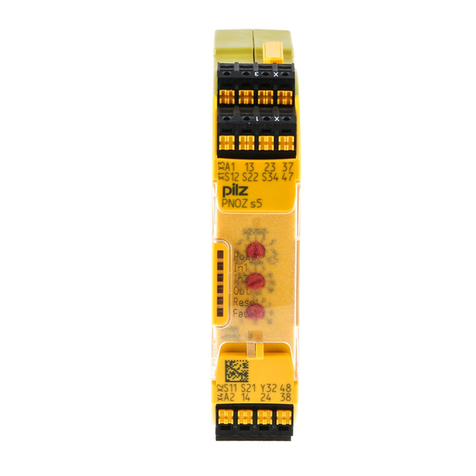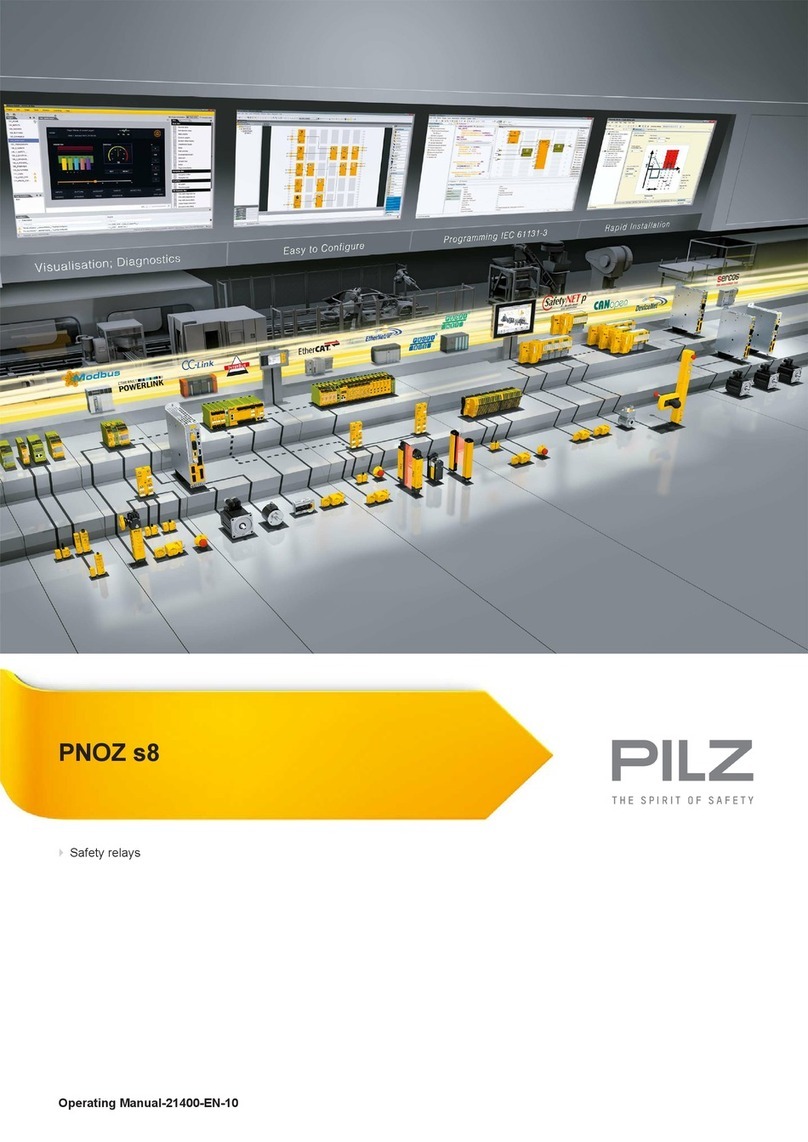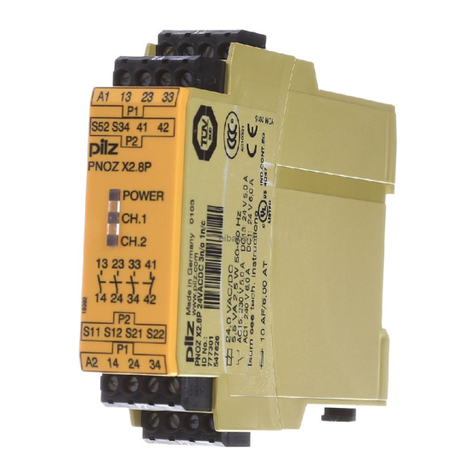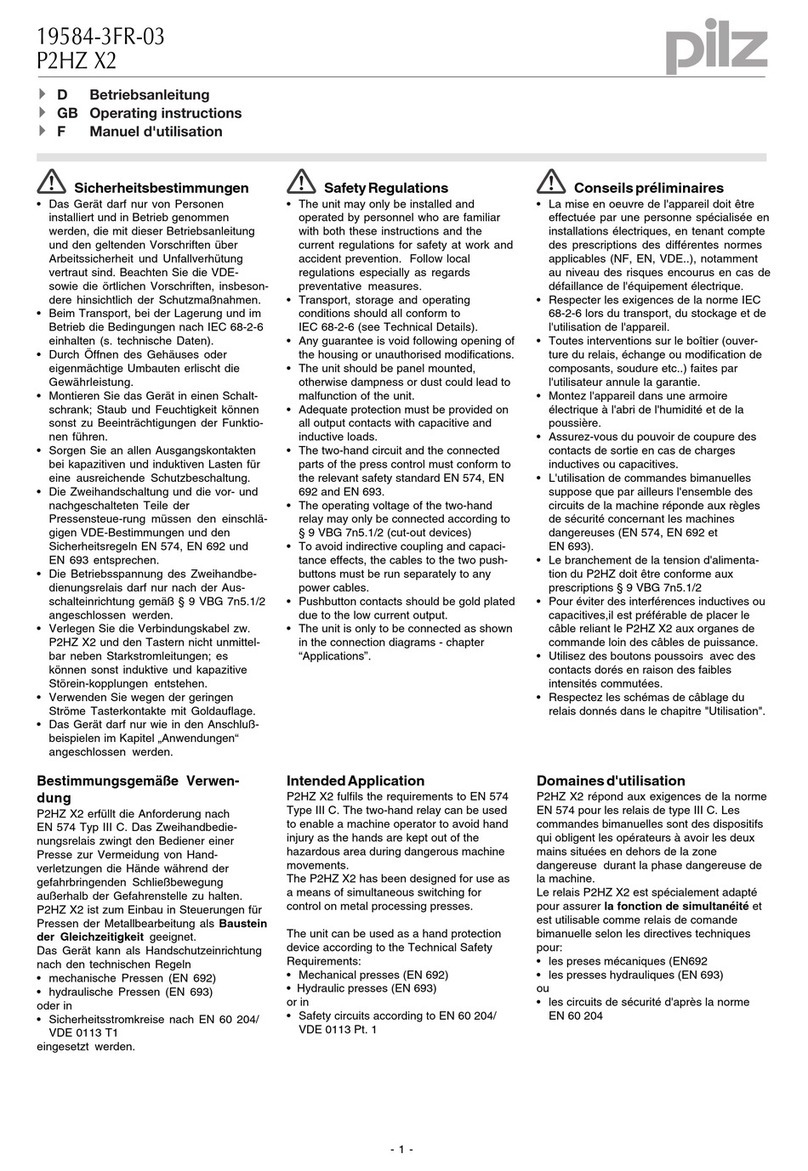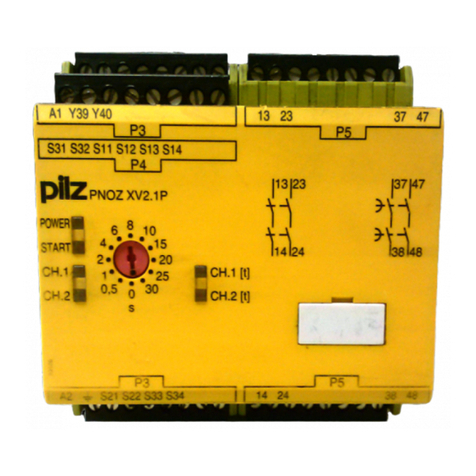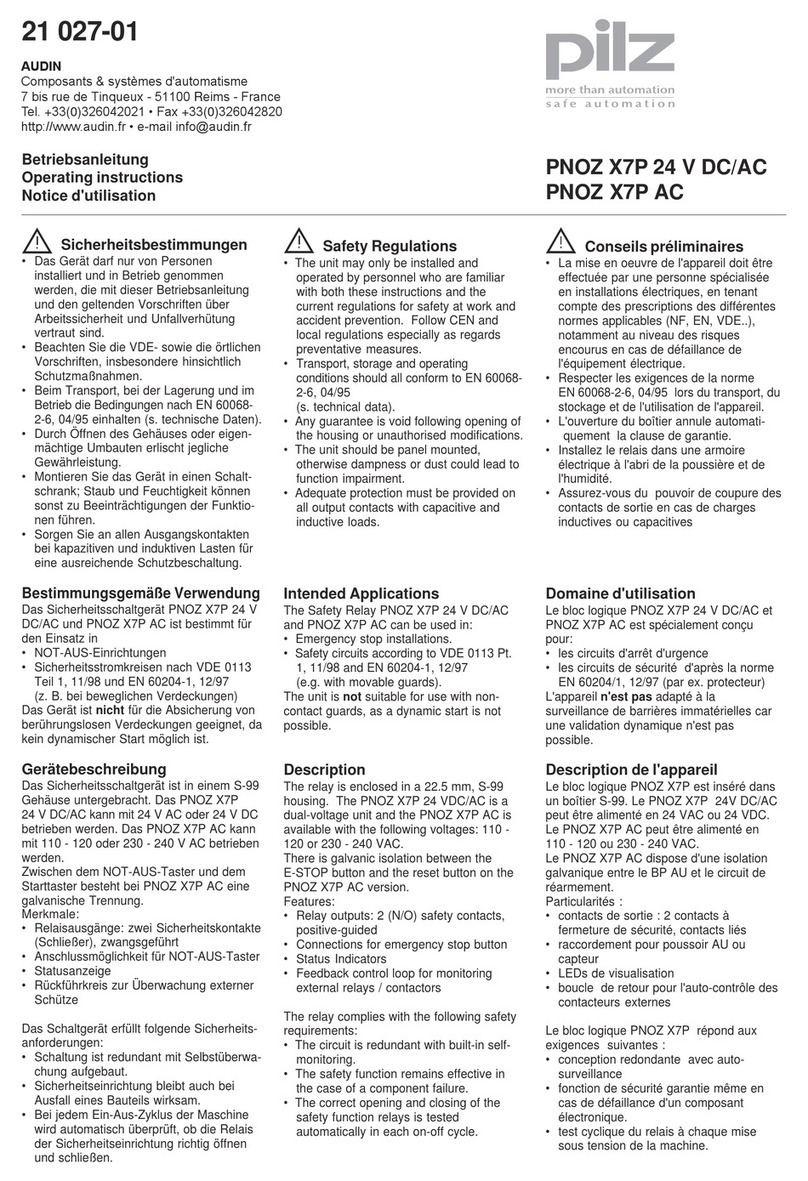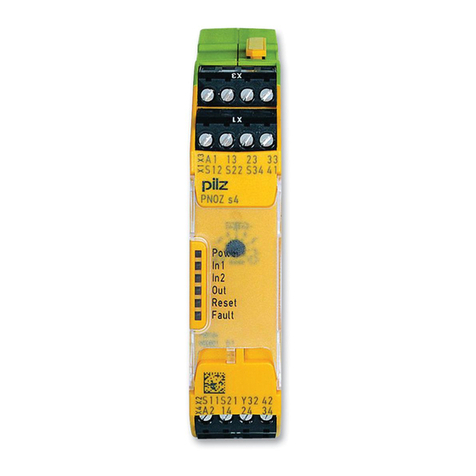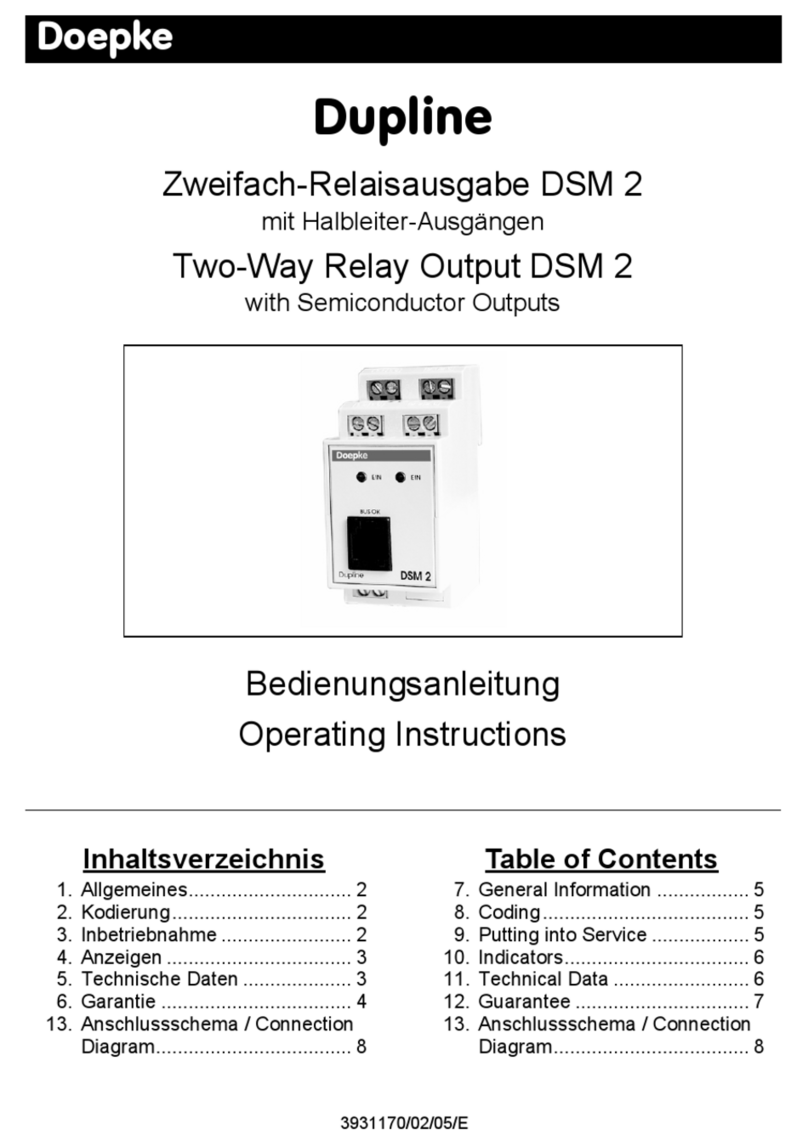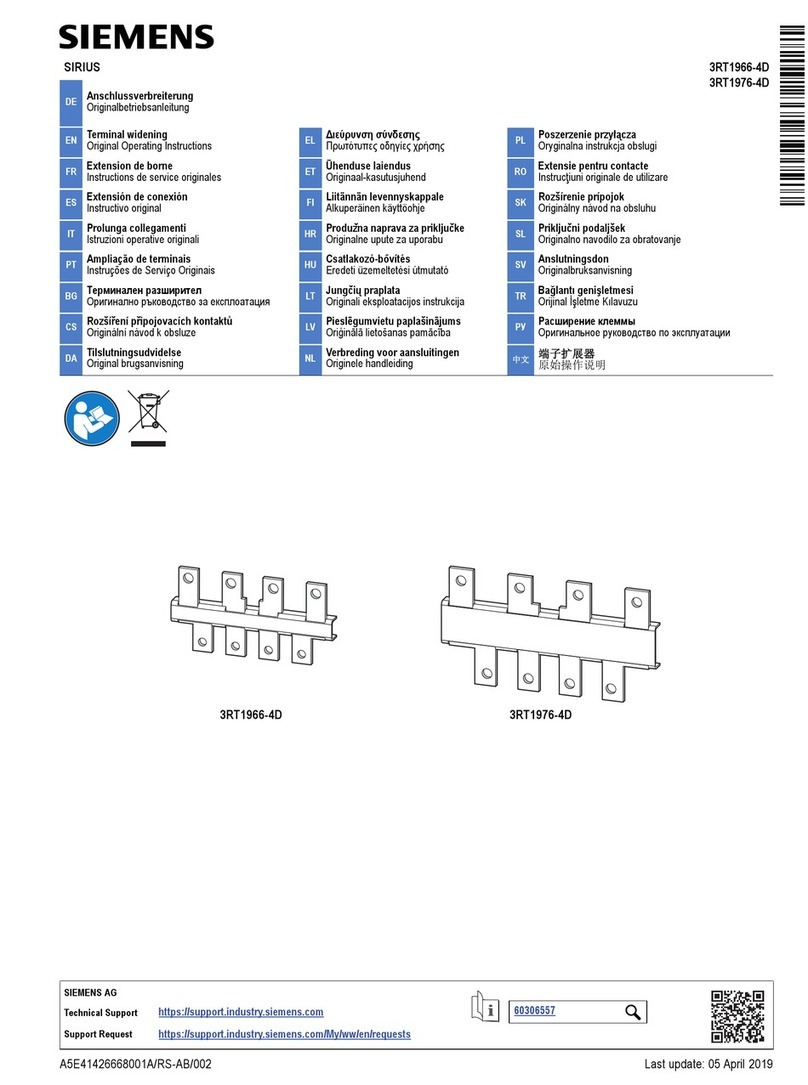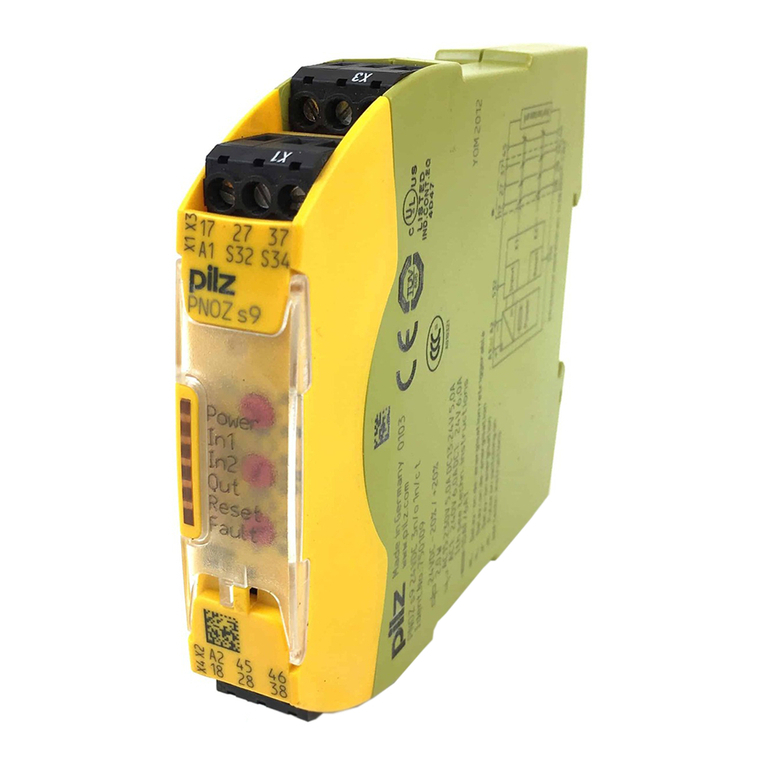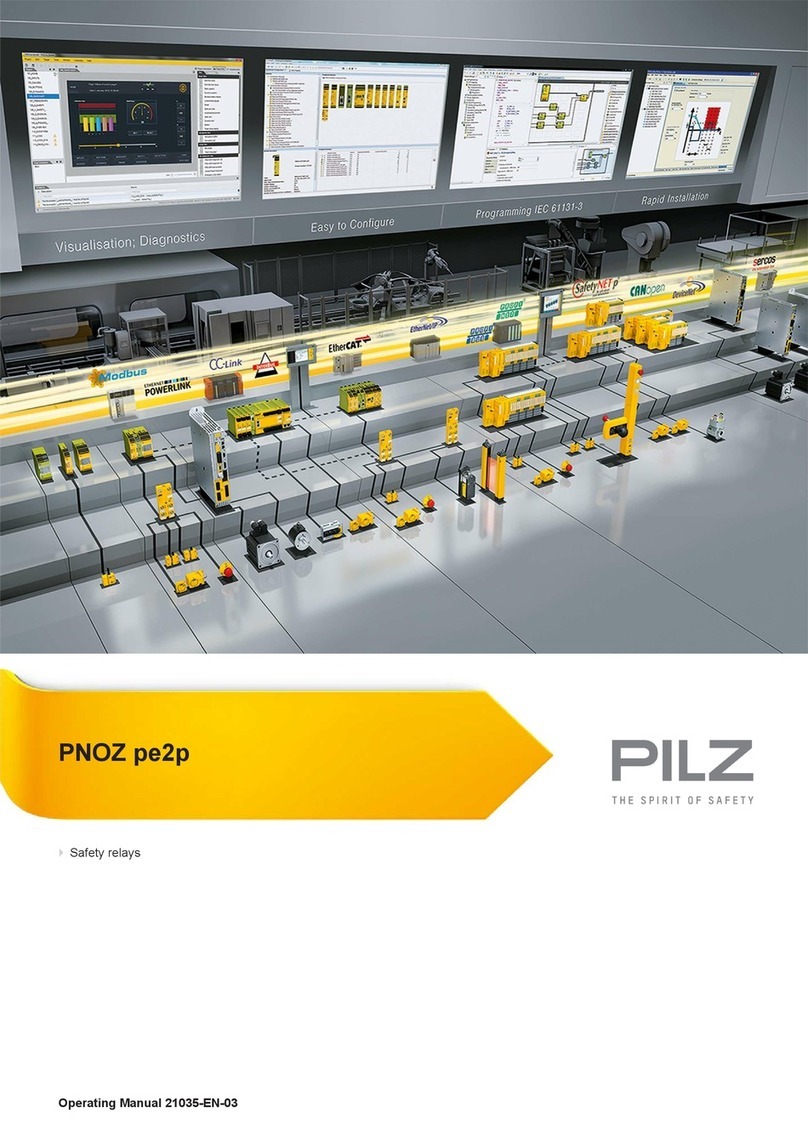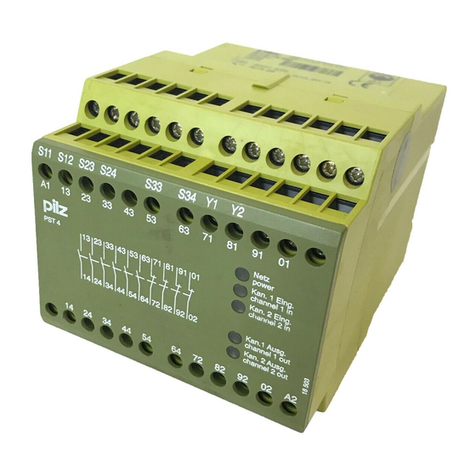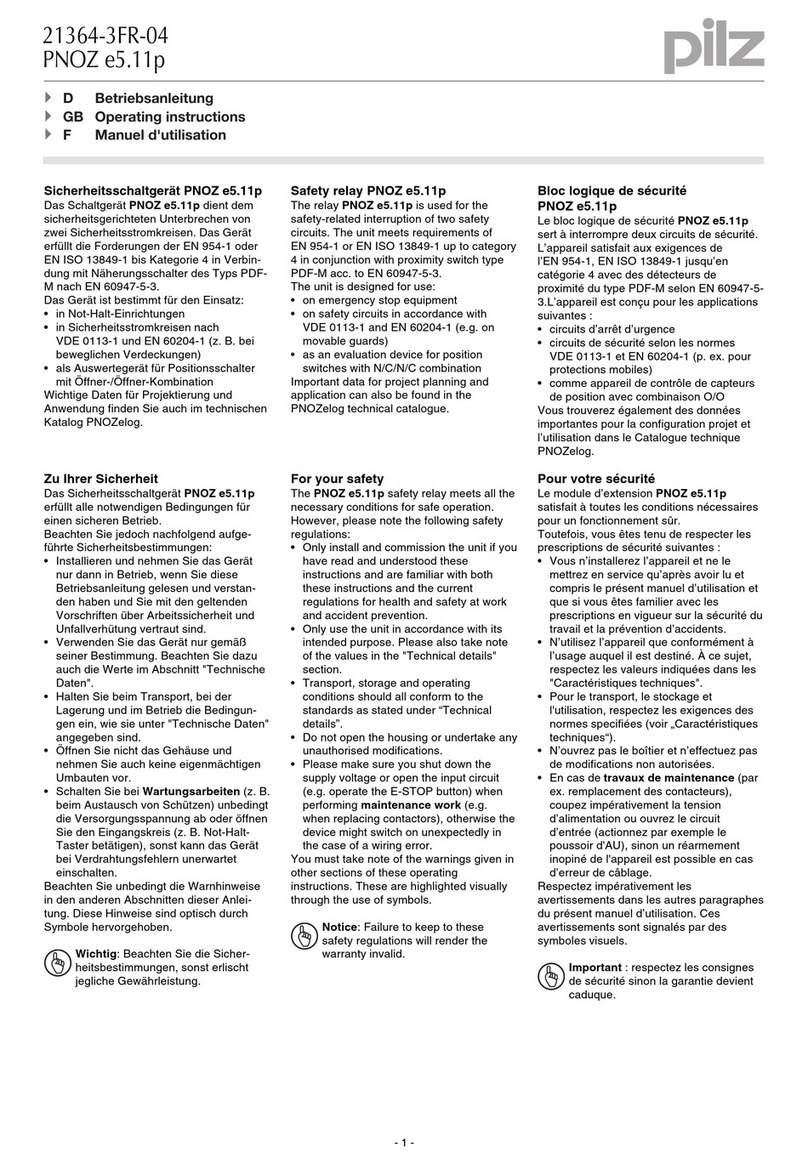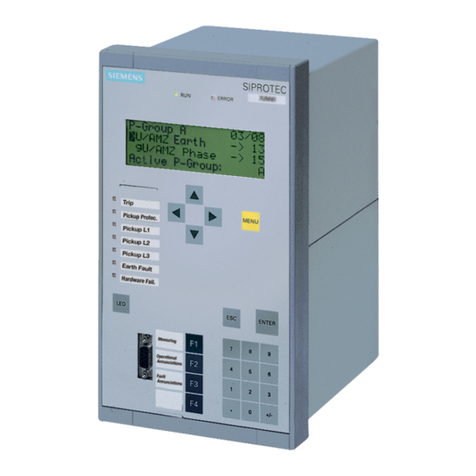
Contents
Operating Manual PNOZ s2
21394-EN-11 | 3
Introduction ............................................................................................................................5
Validity of documentation.......................................................................................................... 5
Using the documentation .......................................................................................................... 5
Definition of symbols................................................................................................................. 5
Safety ...................................................................................................................................... 6
Intended use ............................................................................................................................. 6
Safety regulations ..................................................................................................................... 6
Safety assessment ................................................................................................................... 6
Use of qualified personnel ........................................................................................................ 7
Warranty and liability ................................................................................................................ 7
Disposal .................................................................................................................................... 7
For your safety.......................................................................................................................... 7
Unit features ...........................................................................................................................8
Safety features ....................................................................................................................... 8
Block diagram/terminal configuration ................................................................................. 9
Function description ............................................................................................................. 9
Timing diagram ......................................................................................................................... 10
Installation ..............................................................................................................................10
Wiring ......................................................................................................................................11
Preparing for operation ......................................................................................................... 12
Operating modes ...................................................................................................................... 12
Set operating modes................................................................................................................. 12
Connection................................................................................................................................ 13
Application example ..............................................................................................................15
Operation ................................................................................................................................15
Status indicators ....................................................................................................................... 16
Error indicators ......................................................................................................................... 16
Faults - malfunctions ............................................................................................................. 17
Dimensions in mm .................................................................................................................17
Technical Details ...................................................................................................................18
Safety characteristic data ......................................................................................................... 23
Classification according to ZVEI, CB24I ................................................................................... 24
Supplementary data ..............................................................................................................25
Service life graph ...................................................................................................................... 25
